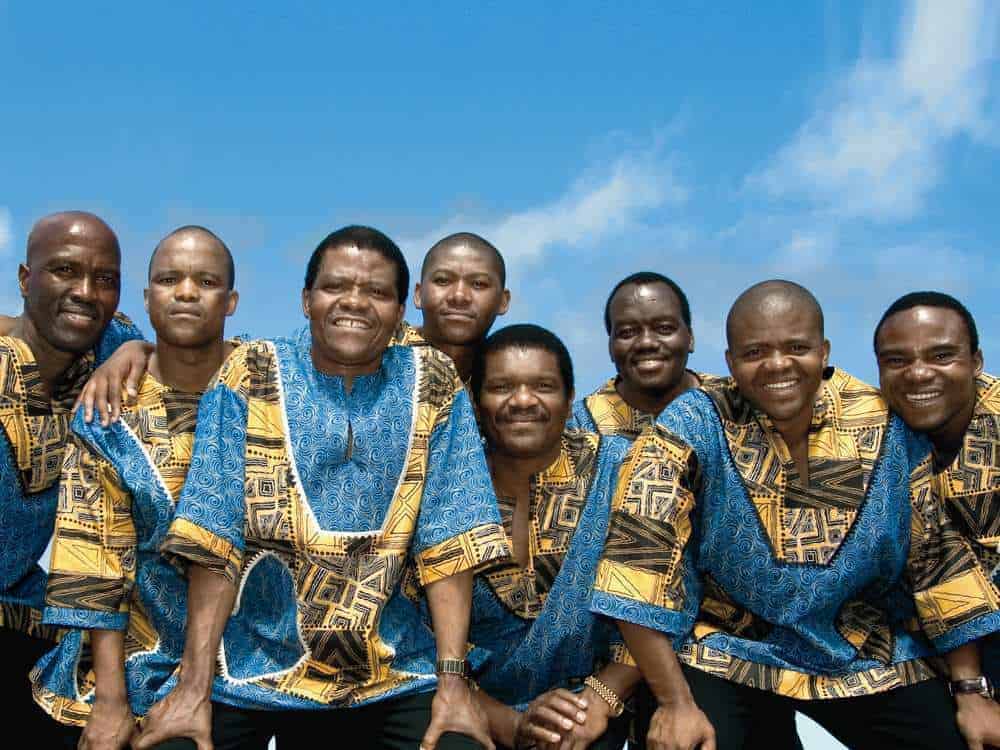Ladysmith Black Mambazo
Waltons World Masters Series
22 June 2011
National Concert Hall
'It isn't merely the grace and power of their dancing or the beauty of their singing that rivets the attention, but the sheer joy and love that emanates from their being.'
– Paul Simon
Did you attend this concert?
We would appreciate your thoughts about it.
Performance
When Wednesday, 22 June 2011, 8 pm
Where National Concert Hall, Dublin, Main Auditorium
Presented by Waltons New School of Music
Supported by RTÉ lyric fm, Sunday Independent, Dublin Conrad Hotel
‘Truly great singing…balancing soulful ballads and traditional dance songs with exquisite and perfectly timed harmony work....’
– The Guardian
‘We travel the world spreading our message of peace, love and harmony. What could be better or more important than that?’
– Joseph Shabalala
Hailed as 'South Africa's cultural ambassadors' by Nelson Mandela, Ladysmith Black Mambazo have been performing powerful, uplifting songs that emote the struggles and passion of South Africa for over forty years. The group sing a capella isicathamiya and mbube music in a joyously energetic performance that combines stirring choruses with softer, almost whispering chants and tightly choreographed dancing, creating a musical and spiritual alchemy that has touched a worldwide audience representing every corner of the religious, cultural and ethnic landscape. They have received fifteen Grammy Award nominations and three Grammy Award wins, and have collaborated with numerous artists from around the world, including Paul Simon on his groundbreaking Graceland album, Stevie Wonder, Josh Groban, Dolly Parton, Ben Harper and many others.
Ladysmith Black Mambazo
In Durban, South Africa in the early 1960s, a young farm boy turned factory worker named Joseph Shabalala assembled a group of young singers and gave it the name Ladysmith Black Mambazo. Ladysmith was the name of Shabalala’s rural hometown; Black was a reference to oxen, the strongest of all farm animals; and Mambazo is the Zulu word for axe, indicating the group’s ability to ‘chop down’ any singing rival who might challenge them. Their collective voices were so tight and their harmonies so polished that they were eventually banned from competitions – although they were welcomed to participate strictly as entertainers.
A radio broadcast in 1970 opened the door to their first record contract – the beginning of an ambitious discography that currently includes more than fifty recordings. Their philosophy was – and remains – as much about the preservation of musical heritage as it is about entertainment. The group borrows heavily from a traditional music called isicathamiya (is-cot-a-ME-Ya), which developed in the mines of South Africa, where black workers were taken by rail to work far away from their homes and families. Poorly housed and even more poorly paid, the mine workers would entertain themselves after a six-day week by singing songs into the small hours of Sunday morning. When the miners returned to their homelands, this musical tradition returned with them.
In the mid-1980s, Paul Simon visited South Africa and incorporated Ladysmith Black Mambazo’s rich harmonies into his Graceland album – a landmark 1986 recording that brought South African music to mainstream audiences. Graceland won many awards, including the Grammy Award for Best Album of the Year. A year later, Simon produced Ladysmith’s first major release, Shaka Zulu, which won a Grammy Award in 1988 for Best Traditional Folk Album. Since then, the group has received fifteen Grammy Award nominations and won three Grammy Awards.
Selected YouTube Videos

